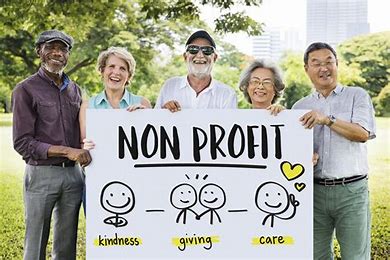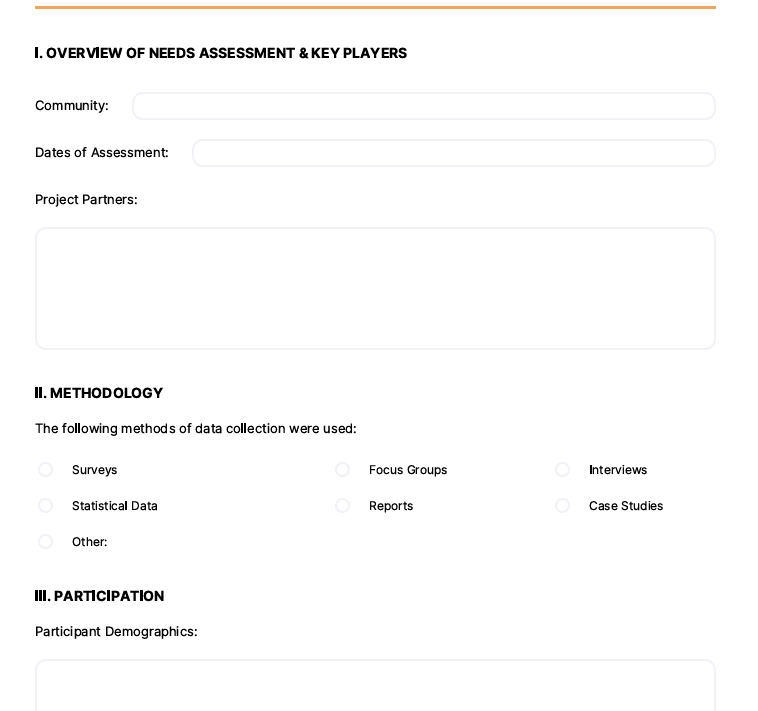Have you ever wondered if your nonprofit organization’s efforts are truly addressing the most pressing needs of your community? Conducting a community needs assessment is an essential step in ensuring that your resources are aligned with actual community needs. By engaging in this assessment process, you can identify gaps in services, inform your strategic planning, and build stronger relationships within your community.
Understanding the Basics of a Community Assessment
A community needs assessment is a systematic process that nonprofit organizations use to identify and analyze the needs of the communities they serve. By conducting this assessment, nonprofits can ensure their programs and services are effectively addressing those needs, leading to more impactful outcomes.

What is a Community Needs Assessment?
A community needs assessment is a comprehensive evaluation designed to understand the strengths and challenges within a specific community. For nonprofit organizations, it serves as a crucial tool to identify unmet needs, allocate resources efficiently, and prioritize initiatives that will make the most significant difference.
This process helps nonprofits gain insights into the demographics, resources, and gaps that exist in the community. By collecting data on factors such as health disparities, economic trends, and social issues, organizations can tailor their programs to address specific concerns. Understanding these elements allows nonprofits to develop action plans that are both strategic and responsive to the community’s unique context.

Key Components of an Effective Assessment
An effective community needs assessment comprises several essential elements:
- Data collection: Gathering quantitative and qualitative data is critical. This includes analyzing statistics from health departments, conducting surveys, and holding focus groups to collect firsthand information.
- Stakeholder engagement: Involving community members, local organizations, and other stakeholders ensures diverse perspectives are considered. This collaborative approach enhances the assessment’s accuracy and relevance.
- Actionable outcomes: The ultimate goal is to translate key findings into strategic planning and implementation strategies. Developing an action plan based on the assessment ensures that the nonprofit organization can address identified needs effectively.
Tailoring the assessment to the unique context of the community is vital. Every community has its own set of characteristics and challenges, and customizing the assessment process ensures that these nuances are captured. This approach not only improves the assessment process but also enhances the effectiveness of the strategic planning that follows.
The topics addressed in the community assessment should be discussed at the national, state, and local levels for comparative purposes. Aggregate and disaggregate the data by zip codes within your community for the best results. Here are the topics your assessment should focus on:
- General concerns.
- Public assistance.
- Health and safety.
- Social and mental health services.
- Health, dental, and nutrition resources.
- Disability services and resources.
Steps to Conducting a Community Needs Assessment

Embarking on a community needs assessment involves several crucial steps that guide your nonprofit organization toward meaningful results. By following this structured approach, you can ensure the assessment process is comprehensive and effective:
Step 1: Planning and Preparation
Begin by setting clear objectives for your assessment. What specific questions do you want to answer? Identifying the scope helps to focus your efforts and resources where they’re needed most. Determine whether you’re assessing a particular issue, demographic, or the community as a whole.
Assembling a dedicated team is essential. Include individuals with diverse skills and perspectives to enrich the assessment process. Allocate resources effectively by budgeting for necessary tools, such as data collection software or hiring external experts if needed.
Step 2: Data Collection Methods
Selecting appropriate data collection methods is critical. Common techniques include:
- Surveys: Distribute questionnaires to gather quantitative data from a broad audience.
- Focus groups: Facilitate group discussions to collect qualitative insights.
- Secondary data analysis: Review existing data from sources like health departments or census reports.
Adhering to best practices for ethical and inclusive data collection is vital. Ensure that participation is voluntary, maintain confidentiality, and strive to include underrepresented groups to capture a full picture of community needs.
Step 3: Analyzing and Interpreting Data
Once data is collected, the next step is synthesis. Look for patterns, trends, and key findings that highlight the community’s needs and strengths. Utilize statistical tools or software to aid in this process, ensuring your analysis is thorough and accurate.
Involving stakeholders in interpreting the results can provide valuable context. Community members, local leaders, and partners can offer insights that data alone might not reveal, helping you understand the underlying causes of the identified issues.

Step 4: Reporting and Sharing Findings
Creating a user-friendly and visually appealing assessment report makes your findings accessible. Use clear language, charts, and graphics to illustrate key points. The report should stand on its own, providing sufficient context without overwhelming the reader.
Share your findings strategically. Present the report to stakeholders, community members, and potential funders. Effective communication builds trust, fosters collaboration, and can lead to additional support for your initiatives.

Step 5: Developing an Action Plan
Translate your assessment findings into actionable strategies. Prioritize the needs you’ve identified and outline specific steps to address them. Set measurable goals and establish timelines to track your progress.
By developing an action plan, you’re not just acknowledging the community’s needs—you’re committing to making a tangible difference. This plan becomes a roadmap for your organization, guiding strategic planning and program implementation.

Finished Community Assessment Needs Report
Once you’ve completed your assessment, you’ll need to compile it all into a report. The report should be visually appealing, reader-friendly, and professional, providing sufficient context so the published report can stand on its own, without added background information.
The community assessment will also include data on community strengths, as well as resources available in the community to address the needs of eligible children and their families. Importantly, conclusions will be supported by data analysis and synthesis. The report will frame each recommendation by establishing the relationship between the data and the recommendation. Structure the final report in the following manner:
- Executive summary: Highlights methods of data collection and analysis, major findings, and key recommendations.
- Table of contents: Identifies section of the report and corresponding page numbers and will include a list of tables and figures.
- Methodology: Describes the planning process, data collection methods, and data analysis.
- Data: Details geographic, economic, and demographic features, including information on hard-to-reach populations, and those families who have not accessed early childhood educational programs.
- Needs: Discusses the education, health, nutrition, and social services of children and their families, including prevalent social or economic factors that impact well-being.
- Community resources: Describes existing family and child development programs, resources available in the community, and community strengths. Addresses issues of availability and access to resources for families.
- Recommendations: Connects the findings in the community assessment to make recommendations about the program and to identify trends in the community.
- Appendices: Includes surveys, interview questions, documents, and supplemental data.
Best Practices for Effective Community Needs Assessments
Engaging Stakeholders
Collaborating with community stakeholders is crucial for a comprehensive assessment. Engaging diverse stakeholders—including community members, local organizations, and faith-based groups—provides a wealth of perspectives and insights.
Consider the following strategies:
- Inclusive engagement: Proactively reach out to underrepresented groups to ensure their voices are heard. This may involve coordinating with community-based organizations that have established trust within these populations.
- Building relationships: Establish long-term relationships by involving stakeholders throughout the assessment process. This fosters a sense of ownership and collaboration.
- Effective communication: Use clear and accessible language when discussing the assessment to make it relatable to all community members.
By involving stakeholders, you ensure the assessment is comprehensive and the resulting action plan is grounded in the community’s reality. This collaboration strengthens trust and enhances the likelihood of successful implementation strategies.

Ensuring Data Accuracy and Integrity
Maintaining the accuracy and integrity of the data collected is paramount. High-quality data leads to key findings that accurately reflect community needs and inform effective action plans.
Best practices include:
- Data verification: Cross-reference information from multiple sources like health departments, hospital facilities, and public records to ensure data accuracy.
- Ethical standards: Uphold ethical practices in data collection by obtaining informed consent and ensuring confidentiality. This respect for participants builds trust and encourages honest feedback.
- Transparency: Be transparent about your data collection methods and how the data will be used. This openness enhances credibility and fosters community support.
By focusing on data accuracy and integrity, your nonprofit organization can develop strategic planning initiatives that are reliable and effective. Accurate data collection ensures that your implementation strategies address the community’s true needs.
Lorem ipsum dolor sit amet, consectetur adipiscing elit. Ut elit tellus, luctus nec ullamcorper mattis, pulvinar dapibus leo.

Leveraging Community Needs Assessments for Organizational Success
Organizational Success
Conducting a thorough community needs assessment is more than just a procedural task—it’s a strategic tool that can propel your nonprofit organization toward greater success. By leveraging the key findings from your assessment, you can inform strategic planning, enhance program development, and secure vital funding and resources.
Using Assessments to Drive Strategic Planning
Aligning your organizational goals with the community needs identified in your assessment is essential for creating impactful action plans. A well-conducted assessment provides comprehensive data collected on various aspects of the community, such as health disparities, economic challenges, and social issues. By integrating this data into your strategic planning, you ensure your organization’s initiatives are relevant and address the most pressing concerns.
Regularly revisiting and updating your assessments is equally important. Communities are dynamic, and their needs can change over time due to factors like demographic shifts or economic developments. By periodically conducting new assessments or updating existing ones, your nonprofit organization stays responsive and can adjust its strategic planning accordingly. This ongoing process helps maintain alignment with community-based needs and enhances the effectiveness of your implementation strategies.
Communicating Impact to Stakeholders
Utilizing assessment findings to demonstrate impact is a powerful way to engage funders, partners, and the broader community. When you can clearly show how your organization identifies and addresses specific needs, it builds credibility and trust. Sharing key findings from your assessment in grant proposals or during meetings with potential donors can illustrate the direct connection between your programs and the community’s health and well-being.
Effective communication plays a crucial role in this process. Presenting data in a clear, accessible manner ensures that stakeholders understand the significance of your work. By emphasizing transparency in your reporting and highlighting the positive outcomes from your action plans, you strengthen relationships with funders and foster continued support for your nonprofit organization’s mission.

Empowering Your Nonprofit Through Expert Guidance
Conducting a community needs assessment is more than just a procedural step—it’s a strategic move that empowers your nonprofit organization to make informed decisions and create meaningful change. By thoroughly understanding the needs and strengths of your community, you can develop action plans that address real issues, optimize resources, and enhance your impact.
Ready to elevate your organization’s effectiveness? Sunshine Nonprofit Solutions is here to guide you through every step of the assessment process. Our expertise in strategic planning, data collection, and implementation strategies can help you align your efforts with the community’s needs.
Contact us today to discover how we can support your mission and contribute to your nonprofit’s success.
